Solar energy is one of the cleanest forms of energy, that will not only help the Earth remain clean and green, but also make sure that you are not burdened with the hefty electricity bills. Solar energy works by converting the solar power into electrical energy or thermal energy. You can imagine how efficient Solar Energy would be to reduce your electricity bill when the source of energy is sunlight that is plentiful available for anyone to consume.
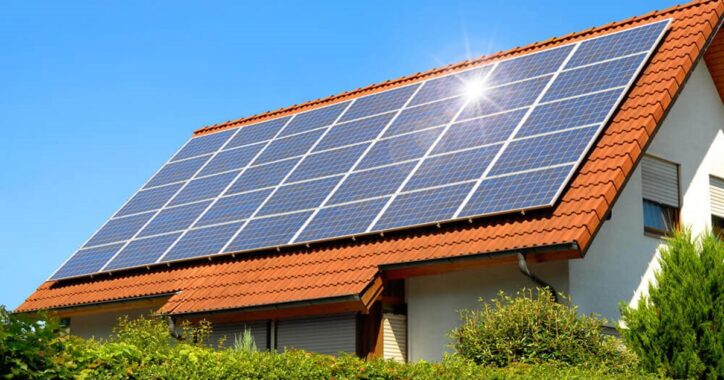
With more and more people realizing the striking benefits of solar energy, there are a number of Solar Power companies in the USA, who provide Solar power at very reasonable prices.
You would be amazed to know that the amount of sunlight that the Earth’s surface receives in an hour and a half is sufficient to power the entire world’s energy requirement for the entire year. And all this without creating any dangerous side effects or causing any kind of resource shortage. Solar energy is the future of the world. And more and more people need to be aware of how Solar energy works. So we have prepared a beginner’s guide on how Solar Energy works, how it is going to benefit you and how exactly you can go solar to reduce your electricity bills and contribute to creating a greener and cleaner environment.
How Solar energy works…
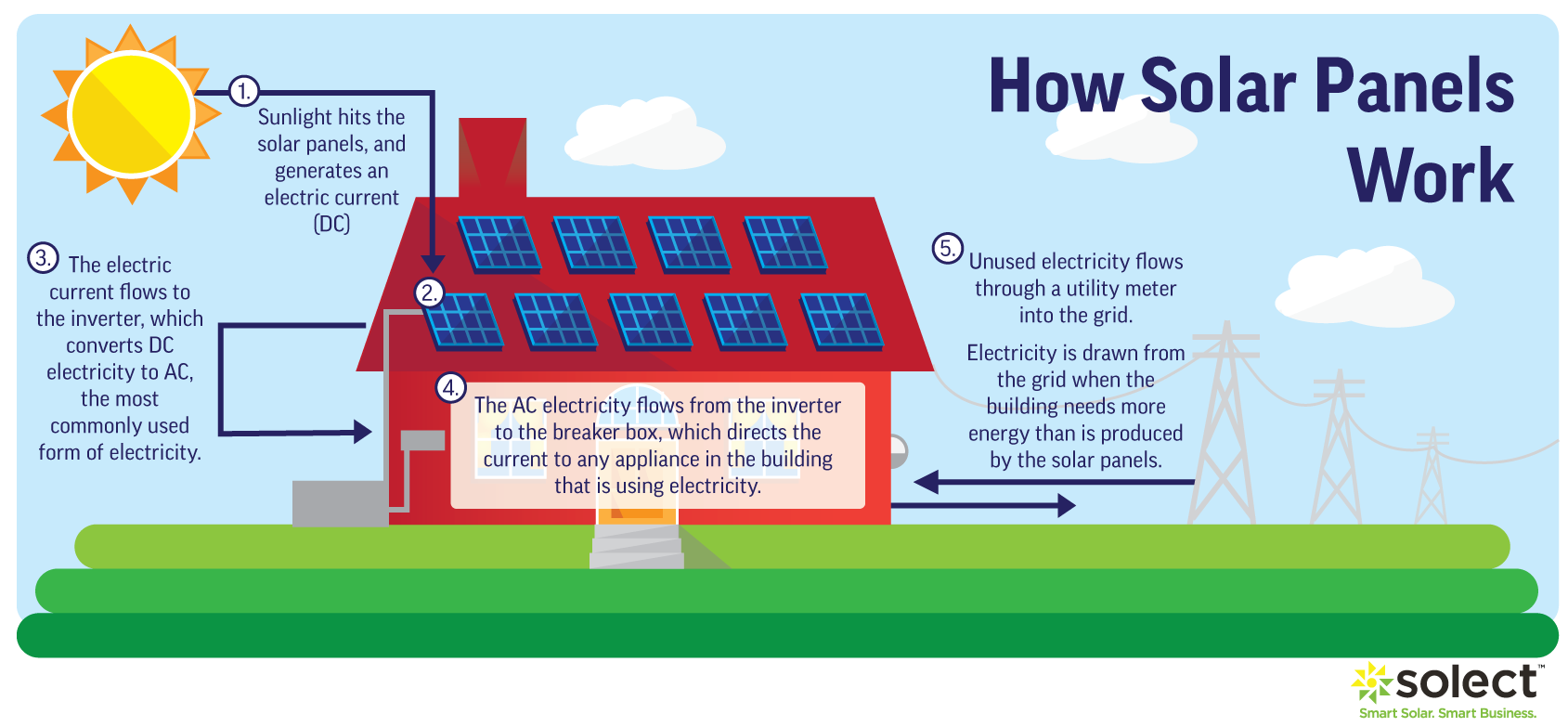
Solar technology works by converting Solar energy into electrical energy. Solar energy can be converted into electrical energy by using three methods:-
- by using photovoltaic panels
- By solar heating & cooling
- By concentrating solar power
Solar radiation is an electromagnetic radiation that the sun emits. Solar technologies that have been devised over the years can capture this radiation and convert it into a useful form of energy. This energy has various functional uses including generating electricity, providing light or a comfortable interior environment, and heating water for domestic, commercial, or industrial use.
Using Photovoltaic Panels to convert Solar radiation into Solar energy:
What is photovoltaic technology, and how does it work? To put it in simple terms, Photovoltaics generate electricity directly from sunlight via an electronic process and can be used to power anything from small electronics such as calculators and road signs up to homes and large commercial businesses.
A single photovoltaic device is called a PV Cell. it is a small structure that can produce about 1-2 watts of power. The PV Cell is made up of semiconductor materials and is as thick as four human hair. You imagine how delicate this device on its own would be. In order to provide protection to the PV cell, and make sure it lasts through different weather conditions, the PV cell is enclosed within a protective material of glass and/or plastic.
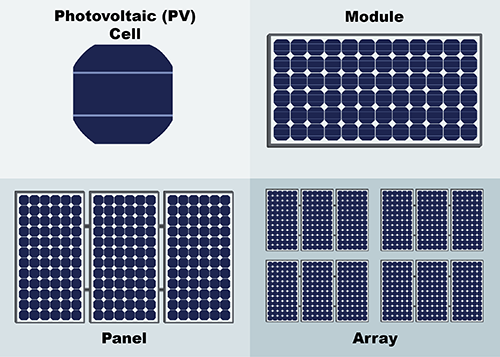
A single PV cell cannot produce more than 2 watts of power, thus a number of PV cells are connected together in chains to form larger units, or panels, that can produce higher intensities of power and give higher output. You must have seen these panels lofted atop the roofs of different buildings.
The Pv Solar panels are connected with other Solar panels to form arrays. These are combined to form an electrical grid as part of the Photovoltaic system. No matter how much your energy requirement is, you can use Photovoltaic solar panels to meet the needs.
The solar cells and Pv solar panels form just one element in the integrated system of photovoltaic mechanism; the other part includes the mounting structures that are used to point the panels towards the sun. This helps in efficiently converting the most amount of solar energy possible.
To complete the mechanism of a PV solar panel system there are components that convert solar energy into electricity.
How do solar panels work?
The solar energy is absorbed by the PV panels. There are electrical charges present inside the panel that move in response to an internal electrical field in each cell, this causes the electricity to flow through.
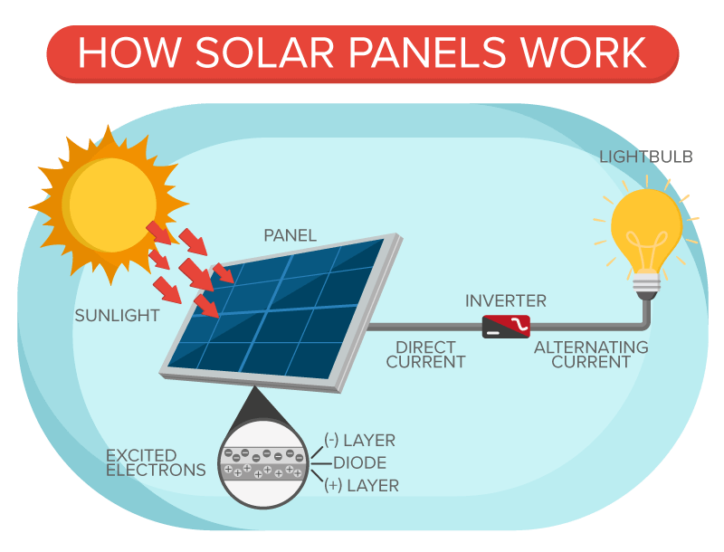
The components that make up the PV solar panel system take the direct current (DC) electricity that is produced by the PV panels. The components convert the Direct current into alternating-current (AC). And this current is what powers the appliances in our homes.
So this is how Photovoltaic solar panels work in order to produce electricity from Solar energy.
Photovoltaic panels are largely used all over the USA. The country’s largest PV systems are present in California. It produces 579 Megawatts of electricity.
Using PV solar panels has a number of benefits. The primary one is that you will not only be reducing your bills by using solar panels, but also store the electricity produced by the solar panel. Because as you will realise, solar energy produces so much surplus electricity that you would never have any trouble with electricity.
Using Concentrating Solar-Thermal Power for solar energy:
What is concentrating solar thermal power? How does the CSP technology work?
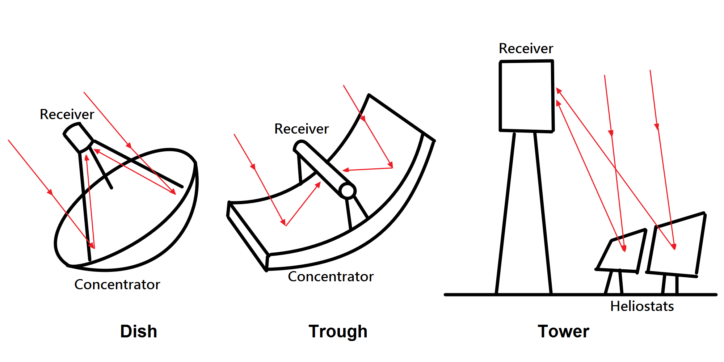
To put it in layman terms, Concentrating Solar Thermal power uses mirrors to reflect and concentrate solar energy onto a receiver. This receiver can collect this solar energy and then convert this into heat. The heat produced is then converted into electricity that can either be used directly or even stored for using it later.
The mirrors placed in the CSP system concentrate the sunlight into a receiver which carries a fluid. The heat from the sunlight, also called thermal heat, when concentrated using the mirrors, heats up this fluid to a high temperature. The thermal heat is channeled through a conventional generator. The plant constitutes two parts: one that collects solar energy and converts it to heat, and another that converts the heat energy to electricity.
This thermal heat can be used to spin a turbine or power an engine to generate electricity. This is how Concentrating solar power technology works.
Wherever more feasible, smaller concentrating solar power systems can be positioned directly at the place where the power is needed. For instance, a single dish system can produce up to 25 kilowatts of power.
The Concentrating solar Thermal power technology is usually opted for for utility scale projects and large power plants. Herein, the CSP plants can be configured in different ways to meet different kinds of energy needs. Today, around 1,815 megawatts (MWac) of CSP plants are in operation in the United States.
Power Tower CSP systems:
In some instances, power tower systems may arrange mirrors around a central tower that acts as a receiver for the thermal heat. Another way can be to use linear systems for concentrating thermal energy generated by solar energy. These systems have rows of mirrors that concentrate the sunlight onto parallel tube receivers placed above them.
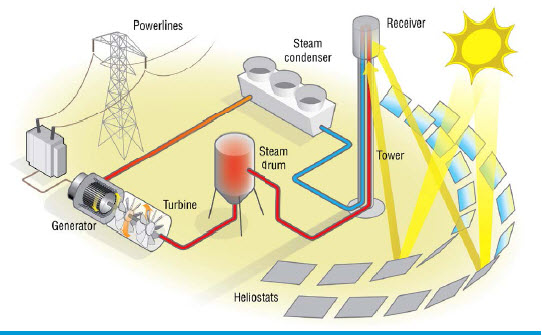
In the case of a power tower system for solar energy a number of flat sun-tracking mirrors concentrate the radiation from the sun onto the receiver placed at the top of a tall tower. The sun-tracking mirror is known as a heliostat. This is positioned to maximize the output given from the solar energy system.
Inside the receiver mechanism is a heat transfer fluid which is used to heat up the working fluid. This fluid is used in a conventional turbine generator to produce electricity.
In some power tower systems, water or steam is also used as the heat-transfer fluid. There are also experiments going on to replace this with molten salts or sand-like particles to make sure that the temperature produced by the systems are optimal for the conversion of solar radiation to electricity.
Parabolic Trough:
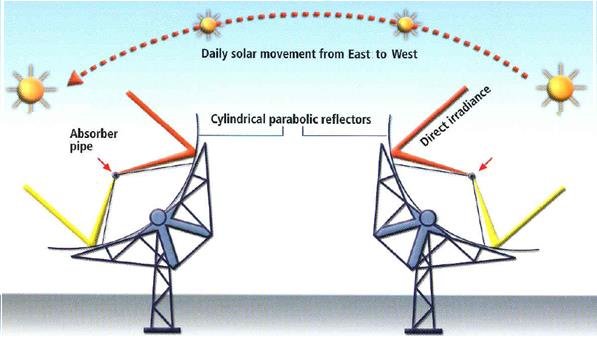
CSP systems also use Trough Systems. These parabolic trough systems are fitted with curved mirrors that can focus solar energy onto a receiver tube running down the centre of the trough. These tubes are constructed in such a manner that they are oil-filled (they use synthetic oils which work as heat transfer fluids) . The reflectors have mirrors on them that focus the solar energy on the pipes to heat the oil inside the pipes. The oil then boils the water and makes steam.
The steam drives a conventional steam turbine generator. This turbine generator is then used to generate electricity. A typical solar collector field contains several hundreds of parallel rows of troughs that are connected as a series of loops. These loops are placed on a north-south axis. This enables the troughs to track the sun from east to west.
Dish Engine Systems:
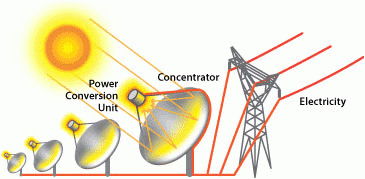
Dish Engine Systems are used to convert solar energy to electricity. Dish Engine systems differ from other CSP technologies to generate electricity from solar energy. While other solar energy generation technologies use steam to create electricity via a turbine, a dish-engine system uses a working fluid such as hydrogen that is heated up.
The Dish Engine system is equipped with mirrored dishes to focus the sunlight onto the receiver. The best part about this mechanism is that the dish assembly tracks the sun across the sky. The receiver in the dish has an engine attached to it which is filled with hydrogen or helium gas. When heated, these gases expand and drive the piston. The piston turns the electric generator giving you an endless supply of electricity created from solar energy.
The electricity generated from CSP systems have a number of industrial applications, like water desalination, enhanced oil recovery, food processing, chemical production, and mineral processing.
CSP based Solar energy plants in the USA are on the rise. They have been operating in USA for more than a decade now.
Using Solar heating & cooling to utilized solar energy
Solar heating and cooling technology is a simple and elegant way to utilize thermal energy from the sun to provide hot water, space heating, cooling, pool heating and other residential, commercial, and industrial applications. This technology is fast replacing conventional energy sources like natural gas and electricity. Solar energy is very widely used in the US. Many American across the country are engaged in manufacturing and installing solar heating and cooling systems which have reduced the dependence and usage of fuels as a source of energy.
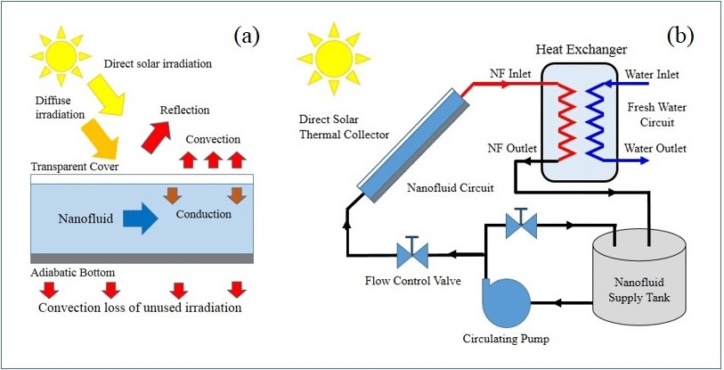
Solar water heating technology can be used at homes in the USA, and consists of 3 main elements: the solar collector which gathers the heat from the solar radiation, insulated piping to ensure that the water doesn’t get cold while being transmitted and a hot water storage tank that can store residual water.
Electronics controls can also be included in the solar heating and cooling system for colder climates.
Solar air technology: another way in which solar energy can be used is solar thermal technology to heat air. It addressed one of the largest usages of building energy, which is space heating. It can also be used for agricultural drying. To capture maximum solar radiation in winters, the solar air heating system is mounted on the walls.
SOLAR SYSTEM INTEGRATION:
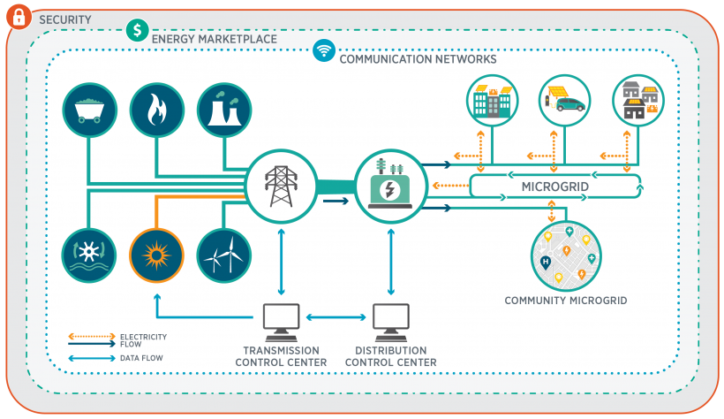
It is not enough just to install the solar energy system at home, or with the generation of electricity by PV systems or CSP systems. These solar energy systems are required to be integrated into the place. Whether you are looking to power your homes or your offices with solar energy, you need to integrate the solar energy system into your homes as well as existing electrical grids with the varying mixtures of traditional and other renewable energy sources.
The integration of the solar system includes developing the right tools and technologies to allow the solar energy onto the electrical grid of your place. The most important thing while doing this is to ensure that the reliability, security and efficiency of the grid are maintained.
STORAGE OF SOLAR ENERGY:
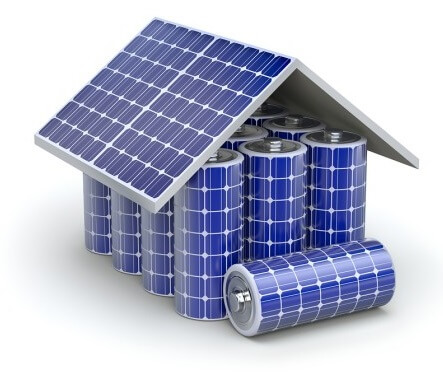
Integrating solar energy with storage technologies is very important. The biggest beneficiary factor is that solar energy would be available to you even when the sun isn’t shining as brightly. Weather can be a dicey and unpredictable thing at times. The most requirement for peak power usage is very often done during the afternoons and evenings in the summers. More often than not during these times solar energy generation fails. Storage can help keep a steady supply of solar energy. Solar energy production is dependent upon various climatic factors which are beyond our control. Factors like rain, snow, clouds, haze or obstructions like shadows. In such times it is a very clever idea to have a dependent supply of solar energy for a rainy day. (literally and figuratively). Storage technology can capture electricity produced by solar energy. This electricity is converted into another form of energy (like thermal, mechanical, chemical) which can be released when the use for it arises.
There are different types of energy storage facilities available in the market. The storage facilities used to store solar energy differ on the basis of the amount of electricity (generated using solar energy) they can store in them which is called the energy capacity, as well as on the basis of the amount of energy they are release when required (which is called their power capacity) depending upon your requirements, different energy and power capacities of storage can be used for solar energy. There are a number of economic as well as environmental benefits to using storage technologies for solar energy. If you opt to store solar energy, you are not only making sure that no energy gets wasted, you are also making sure that when there is less or no sunlight, you are easily able to fulfill your energy requirements. Thus you get a firm energy supply no matter what the weather conditions are like. In case of electrical disruption, solar storage can come to your rescue, providing a reliable source to fulfill your energy needs.
The common uses of Solar energy:
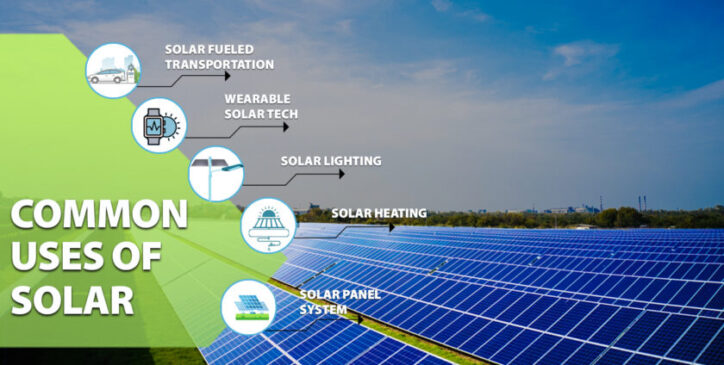
Solar Energy has a number of uses. Previously it was only being used as a secondary source of energy, but in recent years with the innovation and technological advancement in the field of solar power and solar energy, the uses of solar energy have multiplied manifold. While talking about the different ways in which solar energy can be used, we must first talk about the placements that can be applied to solar energy systems in order to maximum the output by it and fulfill our energy needs.
Because of the very flexible nature of Solar energy, it can be built as a distributed generation, which can be placed near the point of use. Whether you are planning to install solar energy for homes or for commercial purposes, this method will be very much suited to your needs. Another option is to build solar energy systems as a central-station, utility-scale solar power plant, this is very much similar to the conventional power plants. They are both highly effective and can also store solar energy.
Talking about the utility and multifarious usages of solar energy, there is not death to it. Solar power can be used for solar heating, the most obvious usage, it can also be used for generating electricity as we have already discussed above. Solar energy has other surprising uses as well.
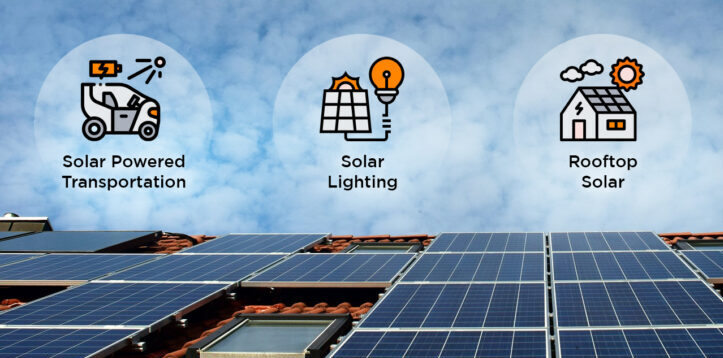
The technological advancements in recent years have seen the advent of solar powered transportation. Photovoltaic solar panels are used in transportation vehicles like Railroads, subways, buses among others. Another very common and highly functional way to utilize solar power is solar lighting. Contrary to the traditional exterior lights that require complicated setups, solar lights require none of that hassle. They are wireless and they harness the solar power from the sunlight during the day to circumvent the need for grid-supplied electricity at night.
The solar market in USA today:
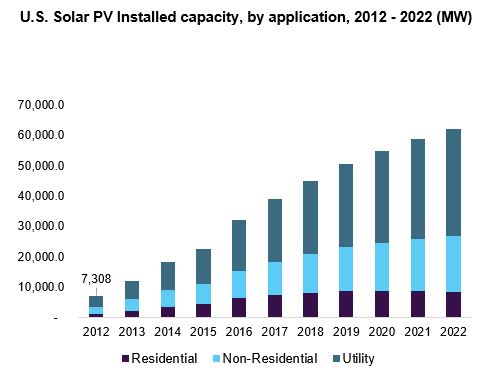
There are nearly 103 gigawatts (GW) of solar installed in the U.S., enough to power 18.6 million homes. Over the last decade, the solar market in the United States has grown at an average rate of 42% each year. There are more than 2.9 million individual solar installations in the U.S., ranging from small home rooftop systems to large utility-scale systems that add hundreds of megawatts of clean electricity to the power grid.
Since the USA gets plenty of sunlight, going solar is a highly efficient way of managing your energy requirements without straining yourself too much with the electricity bills. Why wait to be cleaner and greener for the Earth? Go solar today! In case you wondering how you can get the benefits of Solar power, let us help you make your lives easier.
GOING SOLAR:
Do you want to install solar energy plants, or solar panels at your home? Are you convinced that solar power is the answer to your energy requirements? If yes, then Sun Solar is here to help you. Sun Solar is a directory of all the best Solar installation companies in the USA who offer solar power systems at very reasonable prices. We not only have enlisted with us all the solar companies in USA, but also the real reviews they have got from the people as well as we provide recommendations on the basis of your location and feasibility. We are here to make the process of going solar easier and fruitful to you. We also have all the information you could possibly need about solar energy and solar power.
